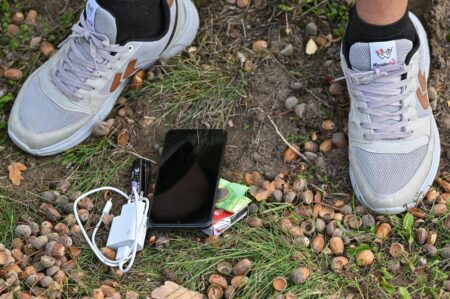It’s very easy to say that you want to save money, build wealth, or manage your finances better. But actually doing it and being consistent is one of the hardest things to do. As people always say about exercise, you have to build a habit and make it part of your routine to be effective. Below are discussed six simple ways you can use to help develop your savings habit and achieve your financial goals:
1. Automate
You’ve probably heard the phrase “pay yourself first” —that you must set aside money before budgeting for expenses because it’s hard to save what you don’t already have. Simple enough, but easier said than done.
When you have bills, groceries, and debts to consider, plus that one restaurant you have been craving to go to or those new shoes you’ve been salivating about, the urge to save and pay yourself first vanishes. Then you’re left with too little or nothing at all for your savings.
Nonetheless with automation, it can actually be easy. Just set up automatic transfers from your checking account to a separate savings account so that you don’t have to make the decision to save. If you think about it, automating transfers is not even technically a part of your savings habit since it’s the app or the bank that’s doing it for you. You can have a fixed amount or percentage from each paycheck, say 20%, automatically deducted and transferred to your preferred savings account. You can even route your savings to multiple accounts for different purposes. Take advantage of technology to make savings easier.
2. Optimize Timing
Whether you are using automated or manual transfers, when you save is equally important. Practice adding to your savings whenever you receive money, such as wages, dividend income, commissions, tax refunds, pensions, government benefits, or bonuses.
This helps you avoid the illusion of having more money to spend, especially from unexpected windfalls. Of course, this does not mean depriving yourself or being overly frugal. It’s about having the mindset of saving as soon as possible to reduce the chances of spending it all.
You should also avoid end-of-month transfers. Never schedule your savings toward the end of a pay period because by then, your checking account has probably absorbed multiple expenses, and your perceived available balance may be lower than what you expected. It will create an internal resistance and increase the temptation to defer savings to a later period.
3. Set A Realistic Amount
While you may want to prioritize savings, the amount should be realistic so that your savings rate can be sustained over time. Assess your income and financial obligations to determine the optimal amount.
Most experts suggest allocating between 10% to 20% of your gross income to savings. This percentage includes your emergency fund, retirement contributions, and other savings goals. You can adjust the amount later as your situation improves or your goals change.
If you think you can’t afford to save a definite percentage yet, you can also just set a fixed amount each month, say $500. Then you can aim to increase this amount by $50 or so each month as you improve your habits or see areas where you can cut back. What’s most important is starting your savings habit. Remember, this is a marathon and not a sprint.
4. Separate Your Accounts
Categorize your savings goals and open a different account for each. This helps you save intentionally and reduces the risk of misallocating funds. When you assign different accounts to individual savings goals, you can enhance financial discipline and align short-term behavior with long-term goals.
This practice can also help you visualize and track your progress, which serves as a continuous motivation. For example, seeing an account labeled “Paris 2026” grow from $0 to $3,000 reinforces a narrative of progress and possibility. This way, abstract goals become measurable.
Additionally, having your funds in separate accounts creates a kind of barrier that may cause you to think twice about impulse buying. The extra step of transferring from one account to another may just be the hurdle that prevents you from dipping into funds that are earmarked for something else. Some banks even allow you to limit withdrawals or hide account balances which serve as another layer for restraint.
5. Track Your Expenses
Sometimes, you might not even need to have a structured budget to save. The simple act of diligent expense tracking is a big eye-opener. Build the habit of listing and monitoring every expense. You can do this at the end of each day or better yet, take note of each expense every time you make one, no matter the amount.
At the end of the week, review your notes. You will be surprised to see how much your daily spending on seemingly inexpensive items add up to a lot. With this information, you can identify areas where you can cut back on spending and allocate those to your savings.
Over time, your tracking data will reveal behavioral patterns —such as emotional spending, seasonal fluctuations, or recurring charges you’ve forgotten to cancel. Recognizing these patterns helps you to make targeted changes, such as setting spending limits, unsubscribing from services, or planning for peak spending periods.
6. Work With Others
It’s one thing to discipline yourself, but it’s another to have someone else encourage you to save. Involve a friend, family member, or professional advisor in your savings journey to increase accountability.
For example, you can work with your spouse to review savings goals and monitor household spending together. Or you can hire a professional financial advisor and conduct regular check-ins to discuss your progress and address challenges. It’s also a good idea to involve children in this process. Not only are you improving your savings habits, you are also helping them to develop good financial behavior early.
Having external reinforcement can increase your motivation to follow through with your savings goals.
Final Thoughts
Building a savings habit is achievable. Start small, stay consistent, and celebrate your progress along the way. Remember, each dollar you save is a step closer to achieving your financial goals and building a more secure future.
Read the full article here
















